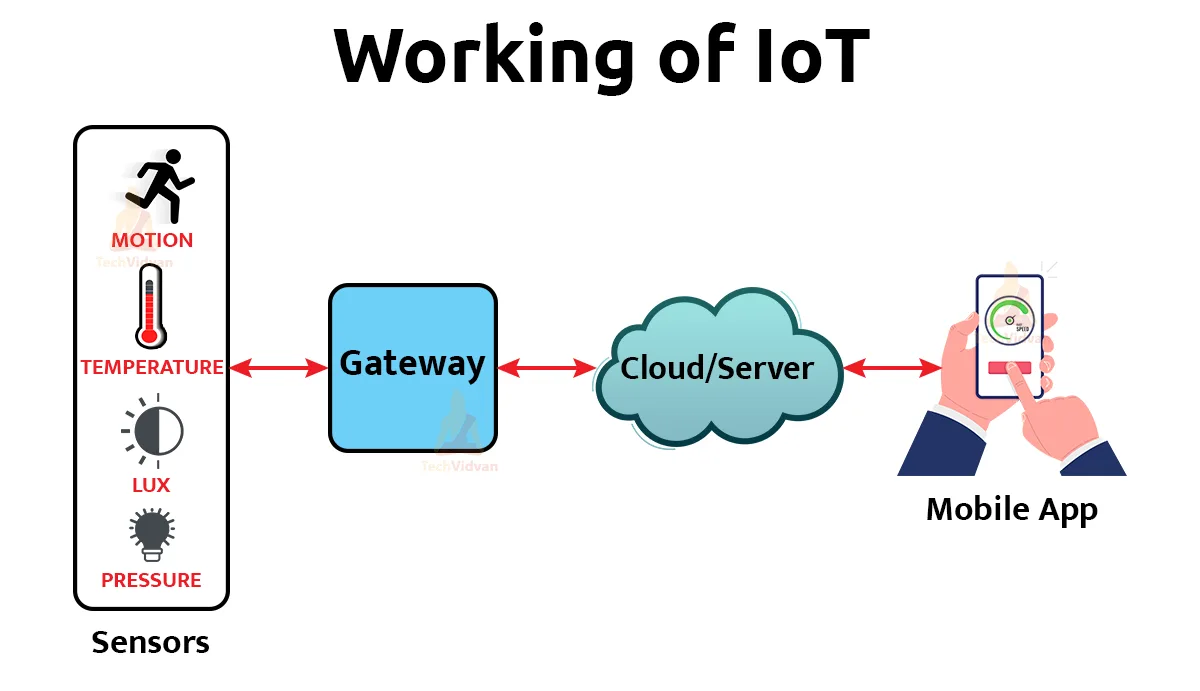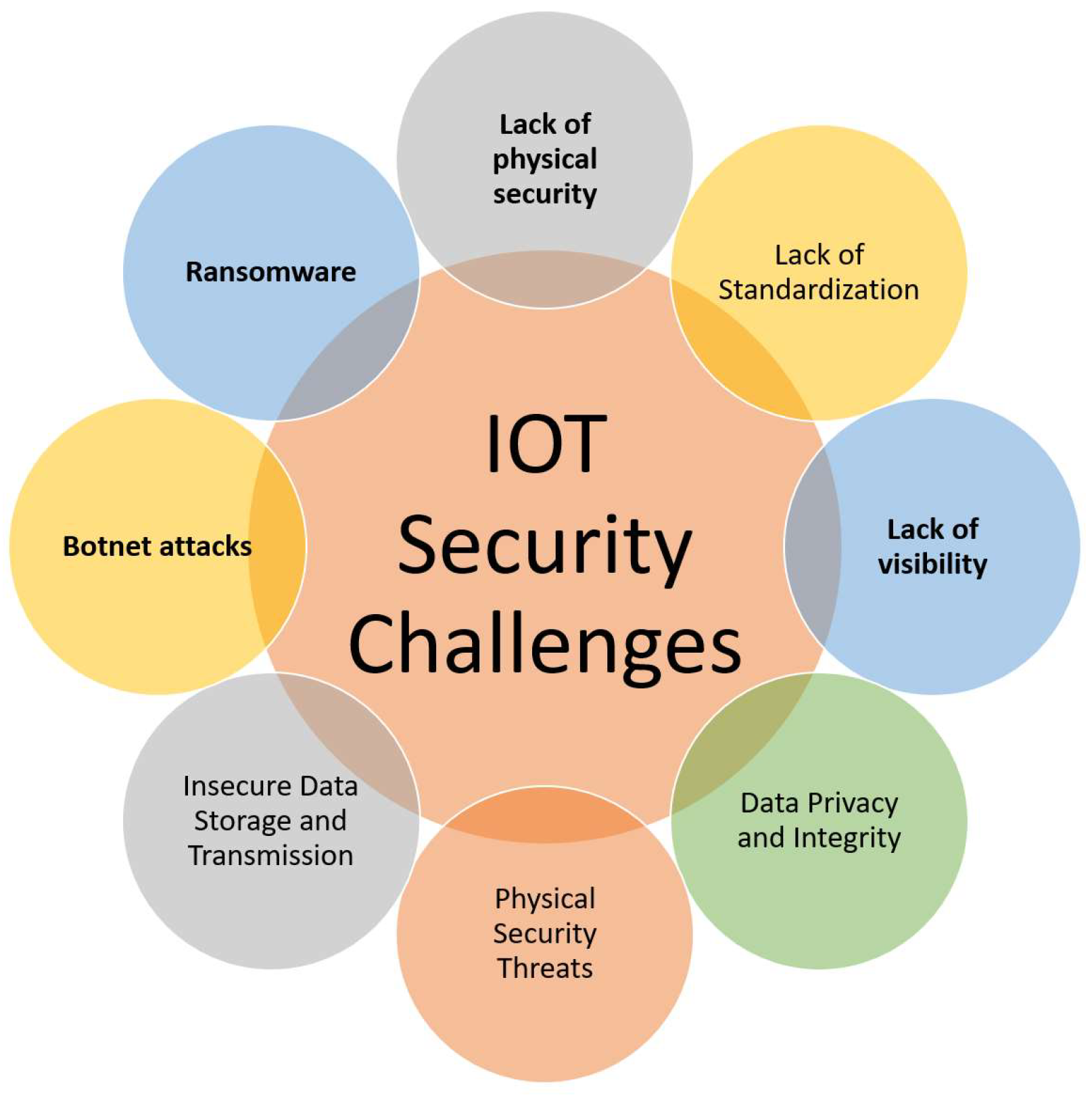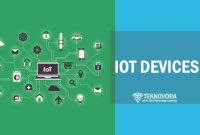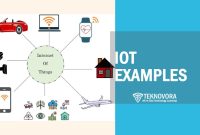You’ve probably interacted with the Internet of Things (IoT) today without even realizing it. Maybe your smartwatch reminded you to stand up, your refrigerator sent a notification about groceries running low, or your office lights turned off automatically after you left the room.
These everyday moments are powered by a vast network of connected devices that collect and exchange data—working quietly behind the scenes to make life more efficient, convenient, and data-driven.
The Internet of Things (IoT) refers to this growing ecosystem of internet-connected physical objects that can gather, process, and transmit data without requiring constant human input. From smart thermostats to industrial sensors, IoT devices are reshaping how we live, work, and interact with the physical world.
As these technologies continue to evolve, understanding how the Internet of Things works—and how it impacts nearly every industry—is no longer optional. It’s essential for businesses, consumers, and anyone who interacts with digital infrastructure on a daily basis.
Let’s explore what the Internet of Things really means, how it functions, where it’s used, and what its future might look like.
What Is the Internet of Things (IoT)?
The Internet of Things (IoT) is a system of interconnected physical devices that can communicate and share data with each other over the internet or other networks. These devices—often embedded with sensors, software, and other technologies—range from everyday household items like smart bulbs and doorbells to industrial machinery and city-wide infrastructure systems.
At its core, the Internet of Things allows objects to be “smart”—not necessarily in the sense of being intelligent, but in their ability to collect data, process it, and act upon it, often without direct human intervention. This network of smart devices enables seamless integration between the digital and physical worlds, making real-time automation and insight-driven decision-making possible.
The term “Internet of Things” was first coined by Kevin Ashton in 1999 while working at Procter & Gamble. He envisioned a world where computers could collect data without human assistance—by using sensors and networks to monitor physical items. Today, that vision has evolved into a global phenomenon that connects billions of devices.
This growing web of connected devices is not just about convenience—it’s also transforming how businesses operate, how cities are managed, and how people engage with their surroundings. But to fully appreciate the scale of this transformation, it helps to understand how IoT actually works.
How the Internet of Things Works

Understanding how the Internet of Things functions starts with looking at the fundamental building blocks behind any IoT ecosystem. At a glance, the process may seem simple: a device collects data, sends it somewhere, and something useful happens. But behind the scenes, a carefully coordinated architecture makes it all possible.
Key Components of an IoT System
A typical IoT system is made up of several key components that work together in a continuous loop:
- Devices/Sensors: These are the “things” in the Internet of Things—physical objects equipped with sensors or actuators that collect data from the environment or perform actions. Examples include temperature sensors, GPS trackers, smart locks, and health monitors.
- Connectivity: Once data is collected, it needs to be transmitted. Devices connect via various networks such as Wi-Fi, Bluetooth, Zigbee, 4G/5G, or LPWAN (Low Power Wide Area Network). The choice of connectivity depends on the use case, distance, and power consumption requirements.
- Data Processing and Cloud Platforms: After data reaches the cloud (or a local gateway), it is processed and analyzed. This might involve filtering out noise, detecting patterns, or triggering alerts. Platforms like AWS IoT, Azure IoT Hub, and Google Cloud IoT Core play major roles here.
- User Interface (UI): Finally, the processed data is made available to users through apps, dashboards, or automated systems. For instance, a mobile app might alert you if your smart door sensor detects unexpected movement.
This flow—sense → connect → process → act—is the heartbeat of any working IoT ecosystem.
IoT Architecture: From Device to Cloud
To visualize how a complete IoT system operates, consider this simplified architecture:
| Layer | Role in IoT Ecosystem |
|---|---|
| Device Layer | Physical sensors and actuators collecting real-world data |
| Network Layer | Connectivity through Wi-Fi, cellular, or LPWAN |
| Data Processing | Edge computing, gateways, cloud platforms |
| Application Layer | User interfaces, mobile apps, system alerts |
Some modern IoT systems also incorporate edge computing, where data is partially processed at or near the source (like an edge device or gateway) before being sent to the cloud. This reduces latency and makes real-time responses faster—crucial in applications like autonomous vehicles or industrial automation.
As IoT adoption increases, the emphasis is also shifting toward interoperability and standardization, ensuring that devices from different vendors can communicate and integrate seamlessly. This technical orchestration is what allows the Internet of Things to function effectively on such a massive scale.
Real-World Examples of IoT in Action
While the Internet of Things might sound like a futuristic concept, it’s already embedded in many aspects of our daily lives. From homes to highways, hospitals to factories, IoT devices are quietly operating in the background—collecting data, making decisions, and optimizing systems. Here are The Internet of Things Examples.
Smart Homes and Consumer Devices
One of the most visible applications of IoT is in the smart home. Devices such as smart thermostats, video doorbells, voice assistants, and automated lighting systems are designed to improve convenience, comfort, and security.
For example, a smart thermostat can learn your daily routine and adjust temperatures automatically to save energy without sacrificing comfort. Similarly, motion-sensor lights or security cameras can send real-time alerts to your smartphone if unusual activity is detected.
These technologies aren’t just convenient—they also contribute to long-term savings and energy efficiency. As more consumers adopt connected home devices, interoperability between brands and platforms becomes increasingly important.
Industrial and Enterprise Applications
Beyond the home, the Internet of Things plays a crucial role in transforming how industries operate. In manufacturing, IoT sensors can monitor machinery to predict maintenance needs, reducing downtime and extending equipment life. In logistics, fleet tracking systems powered by IoT provide real-time location data and delivery status.
The same logic applies to agriculture, where soil sensors and automated irrigation systems help optimize crop yields while conserving water. In healthcare, wearable monitors and remote diagnostics enhance patient care and reduce hospital visits.
Here’s a quick comparison between consumer and industrial IoT use cases:
| Application Area | Consumer IoT Example | Industrial IoT Example |
|---|---|---|
| Home | Smart thermostat | Smart building energy management |
| Mobility | Vehicle GPS tracker | Fleet logistics and route optimization |
| Health | Fitness tracker | Remote patient monitoring systems |
| Environment | Smart air purifier | Environmental monitoring for pollution control |
| Agriculture | Smart garden sprinkler | Soil sensors with automated irrigation |
As seen in the table, the underlying principle of IoT remains the same—connectivity and data—but its implementation varies greatly based on industry and user needs.
Key Benefits of the Internet of Things
The widespread adoption of the Internet of Things is not driven by novelty—it’s driven by value. From reducing costs to improving lives, the benefits of IoT span across industries, professions, and individual lifestyles. Whether you’re a business leader, software engineer, farmer, or homeowner, IoT can introduce measurable improvements in efficiency, safety, and decision-making.
Efficiency, Automation, and Cost Savings
One of the most immediate advantages of IoT is automation. Devices can perform tasks or make decisions based on real-time data without requiring human intervention. For example, factories equipped with smart sensors can detect when machines are likely to fail and automatically schedule maintenance, preventing costly downtime.
Smart energy systems in buildings can adjust lighting, heating, and cooling based on occupancy patterns—leading to significant energy savings over time. In agriculture, automated irrigation systems respond to soil moisture levels, reducing water usage while ensuring optimal crop growth.
By minimizing manual labor, eliminating inefficiencies, and optimizing resource usage, the Internet of Things contributes directly to operational cost reduction across sectors.
Enhanced Decision-Making Through Data
Data is often called the “new oil,” and IoT is one of its most prolific producers. Every connected device generates valuable data that can be analyzed for insights, patterns, and trends.
In healthcare, IoT-enabled devices can help track patient vitals around the clock, allowing for faster diagnoses and personalized treatments. In retail, connected shelves and smart inventory systems provide real-time stock levels, improving supply chain responsiveness.
The real power of the Internet of Things lies not just in data collection, but in transforming that data into actionable intelligence. With integrated analytics and AI, businesses can make faster, more informed decisions—whether it’s adjusting production schedules, improving service delivery, or identifying new opportunities for growth.
Challenges and Security Risks in IoT

Despite its many advantages, the Internet of Things is not without challenges. As billions of devices come online, concerns around security, privacy, and system integration are growing more urgent. The more connected our devices become, the greater the potential surface for cyber threats and operational vulnerabilities.
Security and Privacy Concerns
IoT devices often operate in environments with limited security protocols. Many are shipped with weak default passwords, outdated firmware, or insufficient encryption—making them attractive targets for hackers. Once compromised, these devices can serve as entry points for broader network attacks.
For consumers, this raises significant concerns around privacy. A smart speaker recording conversations, a hacked security camera streaming live footage, or a wearable leaking health data—all represent real risks that stem from inadequate IoT protections.
Moreover, some devices collect sensitive personal information continuously without users fully understanding how the data is stored or shared. Inadequate transparency from manufacturers only deepens the problem.
Scalability, Compatibility, and Infrastructure
Another major challenge with the Internet of Things lies in scalability. As organizations grow their IoT ecosystems, managing thousands of connected devices becomes increasingly complex. Ensuring smooth updates, stable connectivity, and synchronized operations across a distributed network can be daunting.
Compatibility between devices from different vendors is also a persistent issue. Without common standards or protocols, integration becomes fragmented—leading to inefficient systems and limited interoperability.
On the infrastructure side, bandwidth, power consumption, and cloud storage requirements increase proportionally with device count. Businesses must invest in robust networks, data processing systems, and security frameworks to handle growing IoT demands effectively.
| IoT Challenge | Impact on System Functionality |
|---|---|
| Device Vulnerabilities | Increased risk of cyberattacks and data breaches |
| Lack of Standards | Difficult integration across multi-vendor environments |
| Privacy Regulations | Risk of non-compliance with GDPR, HIPAA, etc. |
| Infrastructure Complexity | High costs and technical burden for large-scale deployments |
While these challenges are significant, they’re not insurmountable. With proper planning, standardized protocols, and built-in security at every layer, the risks associated with IoT can be mitigated.
IoT by Industry: Impact Across Sectors

The Internet of Things is not a one-size-fits-all technology. Its applications vary significantly depending on the industry, each with its own goals, challenges, and regulatory considerations. What unites them is the core value of connectivity and data-driven operations that improve efficiency, safety, and outcomes.
Let’s explore how IoT is revolutionizing key sectors around the world.
Healthcare and Medical Devices
In the healthcare sector, IoT is enabling proactive and remote patient care. Devices such as smart inhalers, glucose monitors, and heart-rate trackers allow healthcare providers to monitor patient vitals in real time. This helps detect anomalies early, reduces the need for hospital visits, and ensures continuous care for patients with chronic conditions.
Hospitals are also using Internet of Things solutions to manage assets, track equipment usage, and monitor hygiene compliance. Even operating rooms are becoming smarter, with connected instruments that enhance surgical precision and record procedures automatically for review.
Agriculture, Manufacturing, and Smart Cities
In agriculture, IoT is changing how farms are managed. Soil sensors, weather stations, and automated irrigation systems help farmers optimize resource usage and improve yield predictability. For example, moisture sensors embedded in the soil can trigger irrigation only when necessary, conserving water and energy.
Manufacturing is another area where IoT has made deep inroads. Smart factories use connected machines to collect real-time performance data, detect mechanical issues before they occur, and optimize production flows. Predictive maintenance powered by IoT reduces downtime and extends equipment lifespan.
In smart cities, Internet of Things technologies are used to manage traffic lights, monitor air quality, automate waste collection, and improve emergency response. This results in safer, cleaner, and more efficient urban living.
The table below summarizes IoT use cases across industries:
| Industry | IoT Application | Benefits |
|---|---|---|
| Healthcare | Remote patient monitoring | Timely care, reduced hospital readmissions |
| Agriculture | Smart irrigation and crop monitoring | Resource efficiency, improved crop yields |
| Manufacturing | Predictive maintenance, process automation | Downtime reduction, cost savings |
| Smart Cities | Traffic, lighting, waste management | Efficiency, sustainability, better public safety |
Each of these use cases highlights how the Internet of Things adapts to different operational goals—whether it’s saving lives, saving water, or saving time.
The Future of IoT: Where Is It Heading?
As the world becomes more connected, the Internet of Things is expected to evolve into an even more intelligent and autonomous ecosystem. Fueled by advancements in artificial intelligence, next-generation networks, and real-time data analytics, the future of IoT will not just be about connectivity—but about context, decision-making, and predictive action.
Emerging Trends: AI, 5G, and Edge Computing
One of the most transformative shifts in IoT is the integration of Artificial Intelligence (AI). With AI algorithms embedded into IoT systems, devices can now make intelligent decisions based on patterns and anomalies detected in real-time data. This is already being applied in security surveillance, healthcare diagnostics, and industrial automation.
5G technology will further accelerate IoT development by offering faster speeds, lower latency, and greater bandwidth. This is crucial for applications that rely on real-time responses—like autonomous vehicles, telemedicine, and robotic surgery. The combination of 5G and IoT will enable massive-scale deployments in smart cities, remote industries, and disaster-prone regions.
Meanwhile, edge computing is emerging as a powerful way to reduce the reliance on centralized cloud infrastructure. By processing data closer to the source (at the “edge” of the network), IoT systems can operate faster and more reliably—especially in time-sensitive environments such as industrial robots or autonomous drones.
| Technology | Role in Future IoT | Impact |
|---|---|---|
| Artificial Intelligence | Enables smarter, context-aware decisions | Automation, fraud detection, predictive analytics |
| 5G Networks | Provides high-speed, low-latency connectivity | Real-time communication, massive IoT device support |
| Edge Computing | Processes data locally on devices/gateways | Reduced latency, enhanced reliability, lower bandwidth use |
These trends not only promise improved performance, but also open up new possibilities that weren’t feasible with traditional networks and architectures.
Predicted Market Growth and Innovations
According to research from multiple market analysts, the number of IoT devices is projected to exceed 30 billion by 2030. Spending on IoT-related infrastructure is also set to reach hundreds of billions of dollars annually—covering everything from hardware and software to cloud services and cybersecurity.
Innovations expected in the near future include:
- Autonomous IoT networks that self-configure and self-heal
- IoT-as-a-Service platforms for small and mid-sized businesses
- Digital twins—virtual replicas of physical systems for real-time simulation and monitoring
- Sustainable IoT with ultra-low-power sensors and recyclable materials
As these innovations take shape, the Internet of Things will become even more embedded in how we build, operate, and interact with the world around us.
How to Start Learning or Implementing IoT

With the rapid rise of the Internet of Things, there’s never been a better time to get involved—whether you’re a curious learner, a software developer, a business leader, or a product designer. Fortunately, there are accessible entry points for both individuals and organizations to explore and adopt IoT technologies.
Learning IoT for Beginners
If you’re new to the IoT space, the best way to start is by understanding the basics of how sensors, microcontrollers, networks, and cloud services work together. A wide range of online courses, tutorials, and open-source communities are available to guide you.
Recommended learning resources include:
| Platform | Type of Resource | Focus Area |
|---|---|---|
| Coursera, edX | Online Courses | IoT architecture, security, programming |
| YouTube | Video Tutorials | Hands-on projects and prototyping |
| Hackster.io | Community Projects | DIY IoT projects with Arduino, Raspberry Pi |
| Medium/Dev.to | Developer Blogs | Real-world use cases, tutorials, walkthroughs |
Hands-on experience is essential. Start small by building a project like a temperature sensor that sends data to your phone. Use beginner-friendly kits such as Arduino or Raspberry Pi, and platforms like Blynk, ThingSpeak, or IFTTT to visualize and automate your device’s behavior.
Building or Using IoT Solutions for Business
For companies, the path to implementing the Internet of Things involves strategic planning. Start by identifying a real problem that can be solved with real-time data. Whether it’s improving supply chain visibility, reducing downtime, or enhancing customer experience, the value must be clearly defined.
Next, consider the following steps:
- Assess Infrastructure Needs – Do you have the network bandwidth, cloud capacity, and IT resources to handle connected devices?
- Choose a Scalable Platform – Solutions like AWS IoT Core, Microsoft Azure IoT, or Google Cloud IoT provide secure and scalable frameworks.
- Prioritize Security – From device authentication to encrypted data transmission, security must be embedded from the ground up.
- Start Small and Scale – Pilot a single use case before rolling out a full deployment.
IoT implementation doesn’t always require in-house expertise. Many startups and vendors offer IoT-as-a-Service platforms that simplify integration. These services help reduce development costs and accelerate time-to-market for companies looking to innovate quickly.
By taking a practical and incremental approach, individuals and organizations alike can benefit from the transformative power of IoT—whether it’s automating a home, optimizing a factory, or reimagining an entire business model.
Conclusion
The Internet of Things is no longer a futuristic concept—it’s a foundational technology shaping the way we live, work, and think. From automating homes and improving healthcare, to optimizing industrial processes and building smarter cities, IoT is transforming our world one connection at a time.
While the benefits of IoT are clear—efficiency, cost savings, better decision-making—it’s important to also address the challenges. Security, scalability, and interoperability must be carefully managed as the number of connected devices continues to grow. Fortunately, emerging technologies like AI, 5G, and edge computing are helping to unlock even more powerful and secure IoT solutions.
Whether you’re a developer, a business owner, or simply someone curious about technology, now is the time to engage with the Internet of Things. Its future is not just about connecting things—it’s about connecting possibilities.
FAQs About Internet of Things (IoT)
What is the difference between IoT and smart devices?
While smart devices are a part of IoT, not all smart devices are connected to a larger ecosystem. IoT refers to an interconnected network of devices that communicate and share data, often involving cloud computing and automation.
Is the Internet of Things secure for personal use?
It can be, but security depends on device quality, network setup, and user awareness. Choosing reputable brands, regularly updating firmware, and using strong passwords are essential steps for personal IoT security.
How is IoT used in agriculture?
IoT is used in agriculture to monitor soil moisture, automate irrigation, track livestock, and gather climate data. These applications help farmers optimize resources and increase crop yield.
What technologies power the Internet of Things?
Key technologies include sensors, microcontrollers, wireless connectivity (Wi-Fi, 5G, LPWAN), cloud platforms, edge computing, and AI for data processing and automation.
Can small businesses benefit from IoT?
Absolutely. Small businesses can use IoT for inventory tracking, energy management, asset monitoring, and customer engagement—often with affordable, scalable solutions available in the market.



